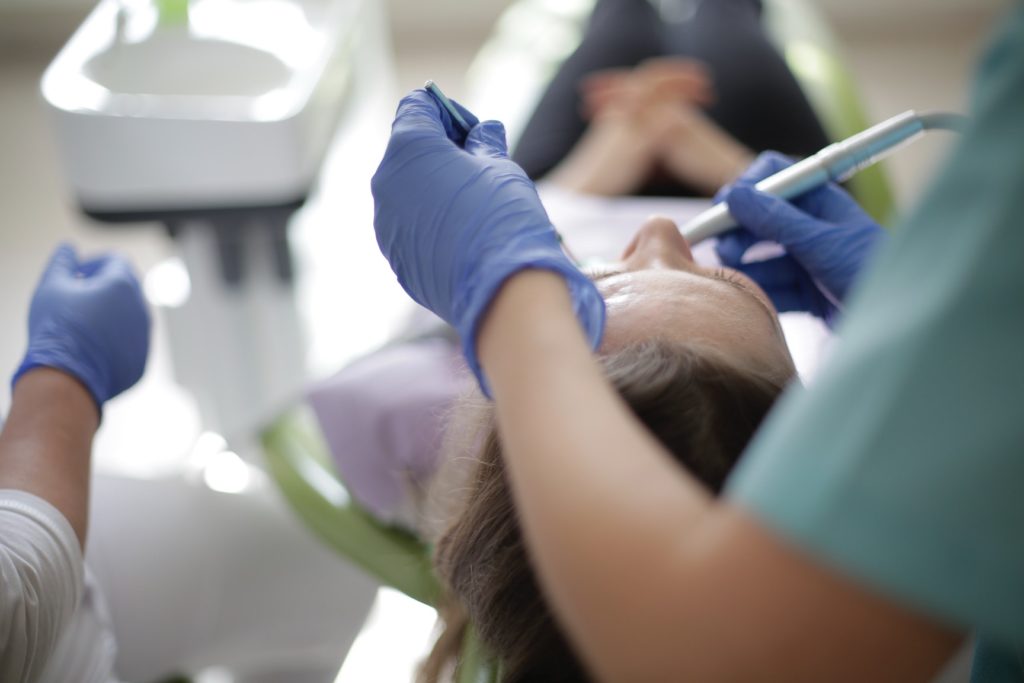Having a perfect smile is a top priority for many people.
In fact, a recent survey conducted by the American Association of Orthodontists found that 75% of American adults believe that a beautiful smile can boost one’s confidence. This is where orthodontic treatment options such as Invisalign come into play.
Invisalign is a popular orthodontic treatment option that uses clear aligners to shift teeth into their correct position gradually. The aligners are custom-made for each patient and are worn for 20-22 hours a day.
They are virtually invisible, making them an attractive option for people who want to straighten their teeth without the noticeable appearance of traditional metal braces.
Invisalign can effectively correct overbite and underbite conditions. It does so by applying pressure to the teeth, gradually moving them into their proper position. Unlike traditional braces, Invisalign aligners do not rely on wires or brackets to achieve the desired results.
Instead, the aligners use a series of clear plastic trays that are custom-made to fit each patient’s teeth.
Invisalign aligners are removable, which means that patients can take them out to eat, brush their teeth, and floss. This makes it easier to maintain good oral hygiene throughout the treatment process.
Invisalign treatment typically lasts between 6 to 18 months, depending on the severity of the case.

1. Overbite and Underbite
Overbite and underbite are dental conditions where the upper and lower teeth do not align properly. An overbite occurs when the upper front teeth overlap the lower front teeth excessively, while an underbite occurs when the lower front teeth overlap the upper front teeth. Both conditions can lead to a host of oral health issues such as difficulty chewing, speech problems, and jaw pain. They can also impact the appearance of a person’s smile, leading to self-consciousness and low self-esteem.
In addition to correcting overbite and underbite, Invisalign also provides other benefits. For example, it can correct teeth crowding, close gaps between teeth, and improve overall dental health. Furthermore, Invisalign aligners are comfortable to wear and do not cause the same level of discomfort as traditional metal braces.
Invisalign is an excellent option for correcting overbite and underbite conditions. It provides a comfortable, effective, and discreet way to straighten teeth and improve oral health. However, it is important to note that not everyone is a good candidate for Invisalign. Consultation with an orthodontist is necessary to determine the best course of treatment for each individual case.
2. Role of Invisalign in Correcting Overbite and Underbite
Once a patient begins treatment with Invisalign, they will receive a set of custom-made clear aligners designed to gradually shift their teeth into their proper position. Each set of aligners is worn for about two weeks before being replaced by the next set in the series. Over time, the teeth are moved into their desired positions.
For patients with more severe cases of overbite or underbite, Invisalign may also use attachments or rubber bands to aid in the correction process. Attachments are small, tooth-colored shapes that are bonded to the teeth and serve as anchor points for the aligners. Rubber bands are used to apply gentle force to the teeth, helping to move them into the correct position.
Invisalign is often effective in correcting overbite and underbite, as well as other types of malocclusion. However, it is important to note that not all cases can be treated with Invisalign alone. In some cases, traditional braces or other orthodontic treatments may be necessary.
It is also important to note that the success of Invisalign treatment for overbite and underbite depends on several factors, including the severity of the case, patient compliance with wearing the aligners as directed, and following proper oral hygiene practices. Patients must be committed to following the treatment plan and attending all necessary appointments with their orthodontist.
Despite these considerations, Invisalign remains a popular and effective treatment option for correcting overbite and underbite, as well as improving the overall appearance and health of the smile.
Read More about Invisalign: Invisalign Tips that I Wish I Knew from Day One
3. Advantages of Invisalign for Correcting Overbite and Underbite
One of the most significant advantages of Invisalign over traditional braces when treating bite problems is improved comfort and aesthetics. Invisalign aligners are made of clear, smooth plastic, making them much more comfortable to wear than the metal brackets and wires of traditional braces. The clear aligners also blend in with the natural color of teeth, making them much less noticeable than traditional braces, which can be especially appealing for those who are self-conscious about their appearance.
Invisalign treatment also offers more convenience for those with busy lifestyles. Traditional braces require frequent visits to the orthodontist for adjustments, while Invisalign aligners can be changed at home every two weeks, reducing the number of office visits required. This makes it easier for those with work or school commitments to stay on top of their treatment plan.
Additionally, Invisalign aligners can be removed when eating or brushing and flossing, making it easier to maintain good oral hygiene during treatment. Traditional braces can make cleaning teeth difficult, leading to an increased risk of decay or gum disease.
In cases where attachments and rubber bands are needed to address more severe bite problems, Invisalign can still be an effective treatment option. Attachments are small, tooth-colored bumps that are placed on teeth to help the aligners apply more force and move teeth more efficiently. Rubber bands can also be used to help shift teeth into their proper position.
Overall, Invisalign offers many benefits over traditional braces when it comes to treating bite problems. It provides improved comfort, aesthetics, convenience, and better oral hygiene, making it a popular choice for those looking to correct their bite issues.

4. Potential Challenges in Correcting Overbite and Underbite
While Invisalign can be a highly effective treatment option for correcting overbite and underbite, it is important to note that it may not be the best option for every case. Invisalign may not be suitable for those with severe bite problems, such as those with a significant overbite or underbite that requires extensive orthodontic treatment.
In some cases, traditional braces or other orthodontic treatments may be necessary to address more complex bite issues. Additionally, patients with certain dental conditions, such as large gaps between their teeth or a history of gum disease, may not be good candidates for Invisalign.
It is also important to note that success with Invisalign is highly dependent on patient compliance with wearing the aligners for the recommended amount of time each day. Invisalign aligners should be worn for 20 to 22 hours per day in order to achieve the desired results. Failure to comply with this requirement can lead to delays in treatment progress and potentially compromise the final outcome.
In addition, Invisalign treatment may take longer than traditional braces for some cases, especially for those with more severe bite problems. It is important for patients to have realistic expectations about the duration of their treatment and to commit to the recommended treatment plan in order to achieve the desired results.
Overall, while Invisalign can be a highly effective treatment option for many patients with bite problems, it is important to consult with an orthodontist to determine if it is the best option for your specific case. Compliance with the recommended treatment plan is crucial for success, and patients should have realistic expectations about the duration and outcome of their treatment.
Invisalign: Effective Treatment Option for Correcting Bite Issues
In summary, Invisalign can be an effective treatment option for correcting overbite and underbite, providing benefits such as improved comfort, aesthetics, and convenience compared to traditional braces. Clear aligners are used to gradually shift teeth into their proper position, and attachments and rubber bands can be used to address more severe cases. Before-and-after photos have shown successful results in many patients.
However, it’s important to note that Invisalign may not be the best treatment option for certain bite problems, such as those requiring significant jaw realignment. Compliance with wearing the aligners for the recommended amount of time each day is crucial for success, and patients should be prepared for the commitment of wearing the aligners for 20-22 hours per day.
Ultimately, the decision of whether Invisalign is the right option for correcting overbite and underbite should be made in consultation with an orthodontist, who can evaluate the specific needs of each patient and develop a personalized treatment plan.




Pingback: Invisalign Fix Underbite? Here’s How - Bite Smile Way